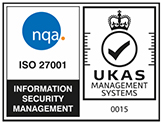It took more than 3 years but the Private Members Bill introduced by the Labour MP Karen Buck has received Royal Assent and has become the Homes (Fitness for Human Habitation) Act 2018. It will come into force on 20 March 2019.
The new Act will amend relevant sections of the Landlord and Tenant Act 1985, namely sections 8-10 inclusive, and extends the obligations included in those sections to cover nearly all landlords and to bring the fitness for human habitation.
The main amendment being introduced by the new Act is to section 9 of the Landlord and Tenant Act 1985. The new s9A(1) of the Landlord and Tenant Act 1985 implies two covenants by the landlord into (most) tenancy agreements for residential properties in England that:
- the dwelling is fit for human habitation as the time the lease is granted or otherwise created or, if later, at the beginning of the term of the lease; and
- the dwelling will remain fit for human habitation during the term of the lease.
It goes on to state that any provision of a lease, or of any agreement relating to a lease, will be void to the extent that it purports to exclude or limit the obligations of the landlord under this implied covenant or to authorise any forfeiture or impose on the tenant any penalty, disability or obligation in the event of the tenant enforcing or relying upon those obligations. In other words, landlords cannot contract out of this covenant or avoid it in any other way and they cannot charge a tenant any penalty if they seek to rely on the covenant.
Sections 9A(2) and (3) do list some exceptions to the obligations set out above. If the property becomes unfit for human habitation as a result of the tenant failing to behave in a tenant-like manner, the landlord will not be liable. Similarly, if the property is rendered unfit as a result of a breach of contract by the tenant, the landlord will not be liable. If the property is destroyed or damaged by fire, storm, food or some similar accident, the Act will not create an obligation on the landlord to reinstate or repair it. There is no obligation on a landlord to repair anything that the tenant is entitled to remove from the property, in other words, the tenant’s own property. Further, if any repairs or works would put the landlord in breach of another statutory obligation, the landlord will not be obliged to carry out that work. For example, a landlord will not be in breach of the implied covenant if the work required would put them in breach of consents in a listed building. Perhaps the most likely exception to be used by landlords however is where they require the consent of a third party (e.g. a freeholder) to carry out the work needed but that consent has not been forthcoming. Landlords will, nonetheless, need to show that they have made reasonable efforts to obtain that consent.
It’s worth noting that the above obligations extend not only to the property being let itself but also to any part of the building in which the landlord has an estate or interest. This is especially important to note in instances where the landlord owns a block of flats.
So, what does it mean to be fit for human habitation?
Firstly, note that it will not be necessary to establish a Category 1 or 2 hazard under the Housing Health and Safety Rating System for a court to find that a property is unfit for human habitation. The court will instead need to look at the amended section 10 of the Landlord and Tenant Act 1985 to establish whether or not the property is unfit for habitation. Section 10 (as amended) lists ten matters that the court shall have regard to when considering whether a property is fit for habitation. These are:-
- repair;
- stability;
- freedom from damp;
- internal arrangement;
- natural lighting;
- ventilation;
- water supply;
- drainage and sanitary conveniences;
- facilities for preparation and cooking of food and for the disposal of waste water; and
- in relation to a dwelling in England only, any prescribed hazard.
‘Any prescribed hazard’, we are informed under the new section 10(2) of the Landlord and Tenant Act 1985, is any matter or circumstance amounting to a hazard under section 2 of the Housing Act 2004. In other words, it includes Category 1 and 2 hazards under the Housing Health and Safety Ratings System (“HHSRS”). Note that the HHSRS is likely to be revised in the not too distant future.
So, whilst a Category 1 or 2 hazard will almost certainly satisfy the meaning of ‘any prescribed hazard’, it is also the case that expert evidence or even, in some cases, non-expert evidence will also be sufficient to satisfy the definition.
Should a property be found to be unfit for human habitation, the tenant of that property will be entitled to bring a claim for general damages, the basis of the assessment of which will be a loss of amenity, in the County Court. This really is no different to current disrepair claims.
Finally, in order for this legislation to apply (to begin with), both of the below conditions must be satisfied:-
- the fixed term of the tenancy must be less than 7 years; and
- the tenancy must have been granted on or after 20 March 2019 (note that this includes renewed tenancies and periodic tenancies even if the initial term was granted before 20 March 2019).
The legislation will apply to all periodic tenancies from 20 March 2020 irrespective of when that tenancy began.
If you have any questions about how this may affect you as a landlord, or as a tenant, contact our Landlord and Tenant team by calling your nearest office or email us at contact@duttongregory.co.uk.







